2015 November 23
Jeremy Tatum writes: Here is the flightless female of the Winter Moth from my Saanich apartment this morning.
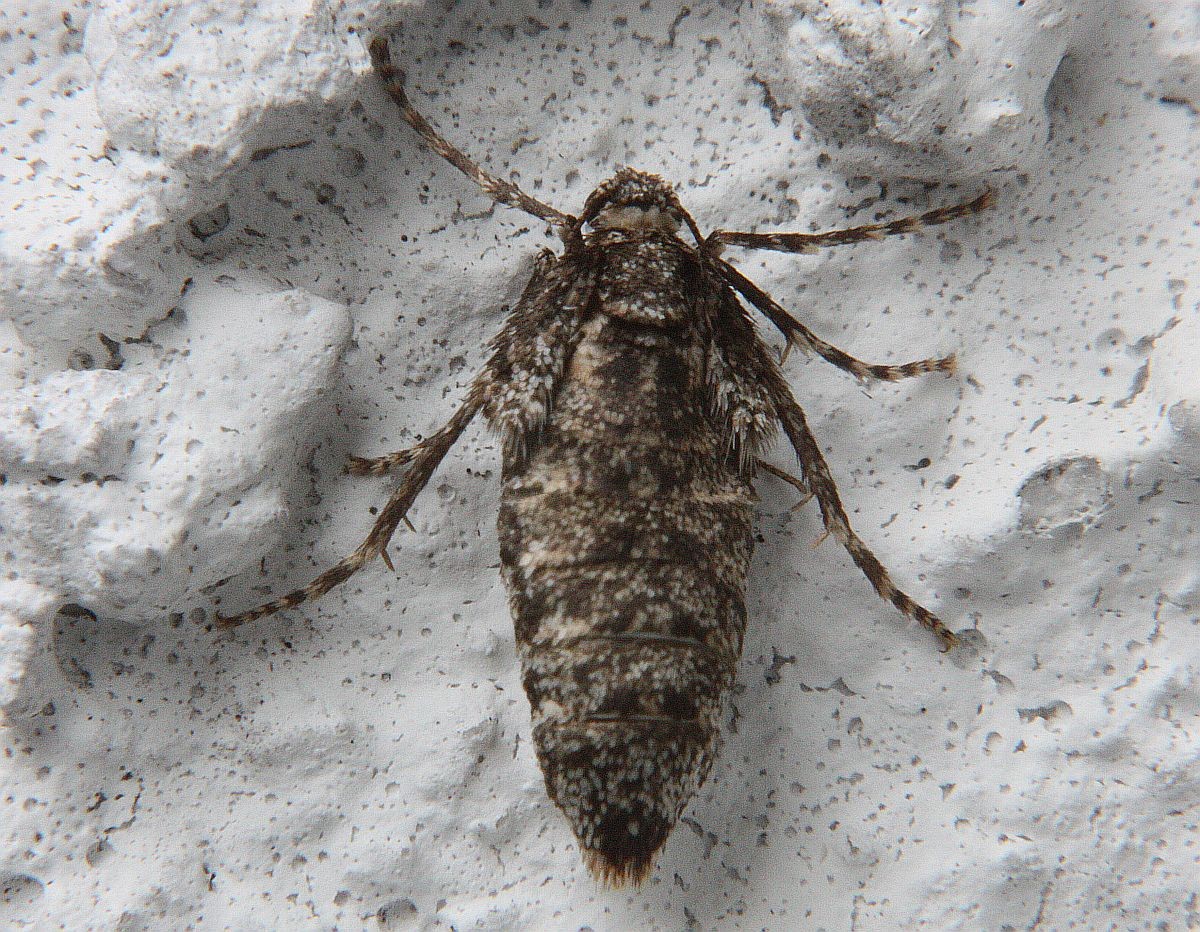
Winter Moth Operophtera brumata (Lep.: Geometridae) Jeremy Tatum
2015 November 23
Jeremy Tatum writes: Here is the flightless female of the Winter Moth from my Saanich apartment this morning.

Winter Moth Operophtera brumata (Lep.: Geometridae) Jeremy Tatum
2015 November 22
Scott Gilmore writes from Upper Lantzville: I was surprised to find an Aquatic Leaf Beetle sitting on my garbage this afternoon. It is a species of Plateumaris (family: Chrysomelidae) but I am not sure which species.
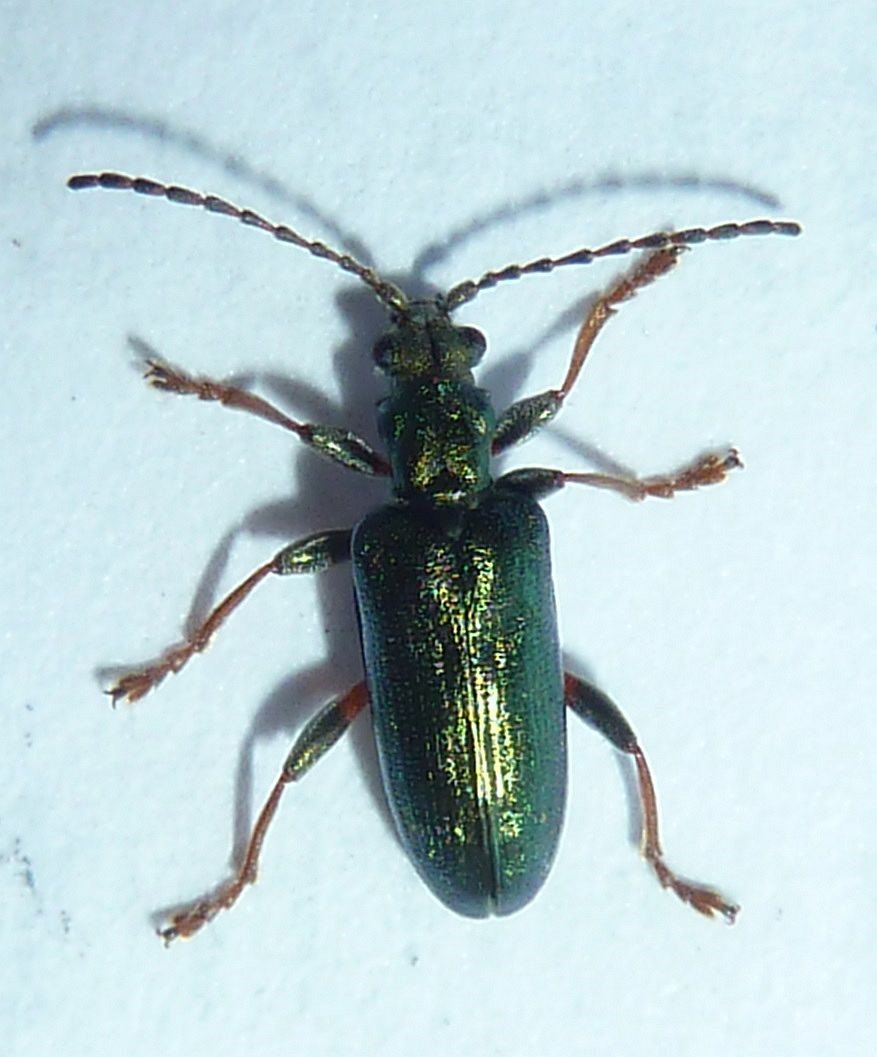
Aquatic leaf beetle Plateumaris (Col.: Chrysomelidae) Scott Gilmore
Jeremy Tatum writes: There is a rare British butterfly in Britain called the Large Tortoiseshell. Recently that species and another very similar, continental European species called the Scarce Tortoiseshell have turned up in Sussex on the south coast of England. There has been some discussion on the Sussex butterfly site about the subtle distinctions between the species. It occurred to me that our California Tortoiseshell is also very similar indeed – so similar that one might regard it as conspecific were it not for the huge distance between here and there. Just to add to the discussion, last year I sent them a picture (by Wendy Ansell) of the California Tortoiseshell, but it didn’t raise any discussion. The discussion about Tortoiseshell identification came up again last week so I sent them a photo (by Val George) of another California Tortoiseshell. They posted it and said it was sent by Jeremy Tatum (Victoria Natural History Society). I don’t know how they had heard of VNHS or that I was a member of it, but when you click on VNHS on their site it sends you to our Invert Alert! So we are now known across the pond! The Sussex site (on which I originally modelled ours) is at
www.sussex-butterflies.org.uk/sightings.html
You can click on VNHS there as a roudabout way of getting to Invert Alert – though it’s also an excellent site itself quite apart from that! Incidentally, if you see any references to BC on the Sussex site, BC stands for Butterfly Conservation.
2015 November 16
Jean Oliver sends a photograph of a Large Yellow Underwing caterpillar found in an acorn in a local park. Although they eat almost anything, acorns, and indeed oaks are not their usual foodplant, and I expect the caterpillars just found the old acorn shell to be a comfortable place to curl up and have a snooze.
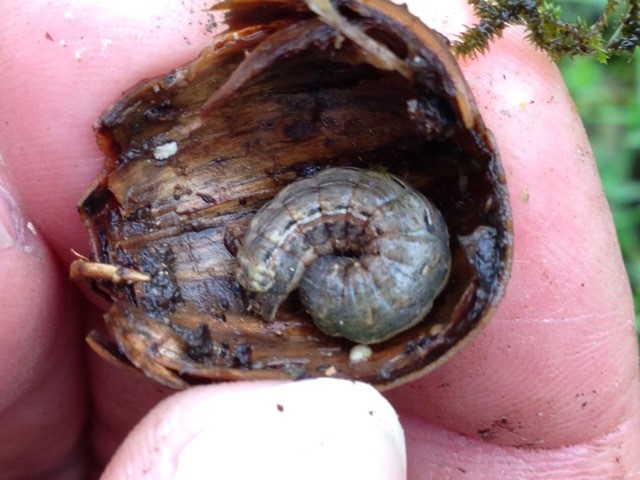
Large Yellow Underwing Noctua pronuba (Lep.: Noctuidae) Jean Oliver
2105 November 11
Rosemary Jorna sends some pictures of spiders from Otter Point. Rated PG – but Robb Bennett, who kindly identified them for us, says that their bark is worse than their bite.
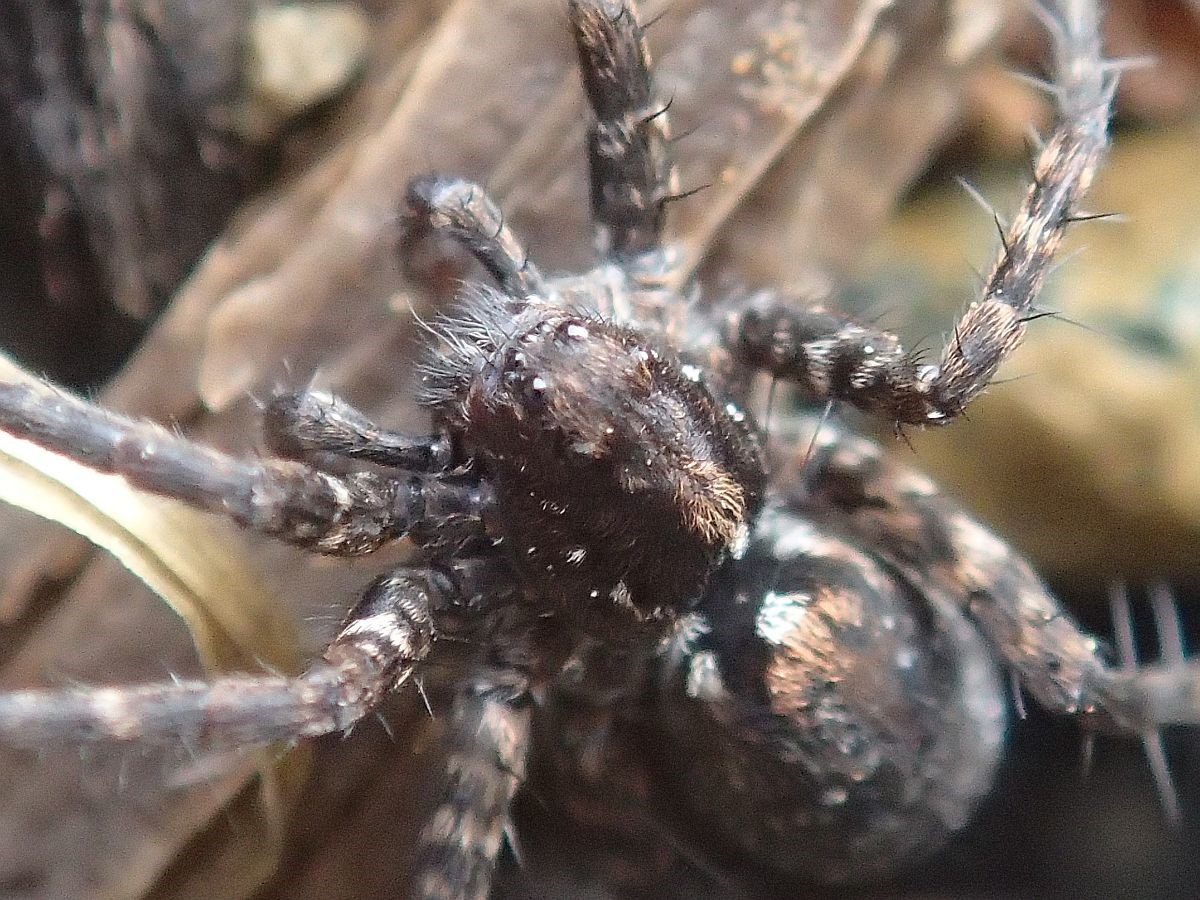
Wolf spider Pardosa sp. (Ara.: Lycosidae) Rosemary Jorna
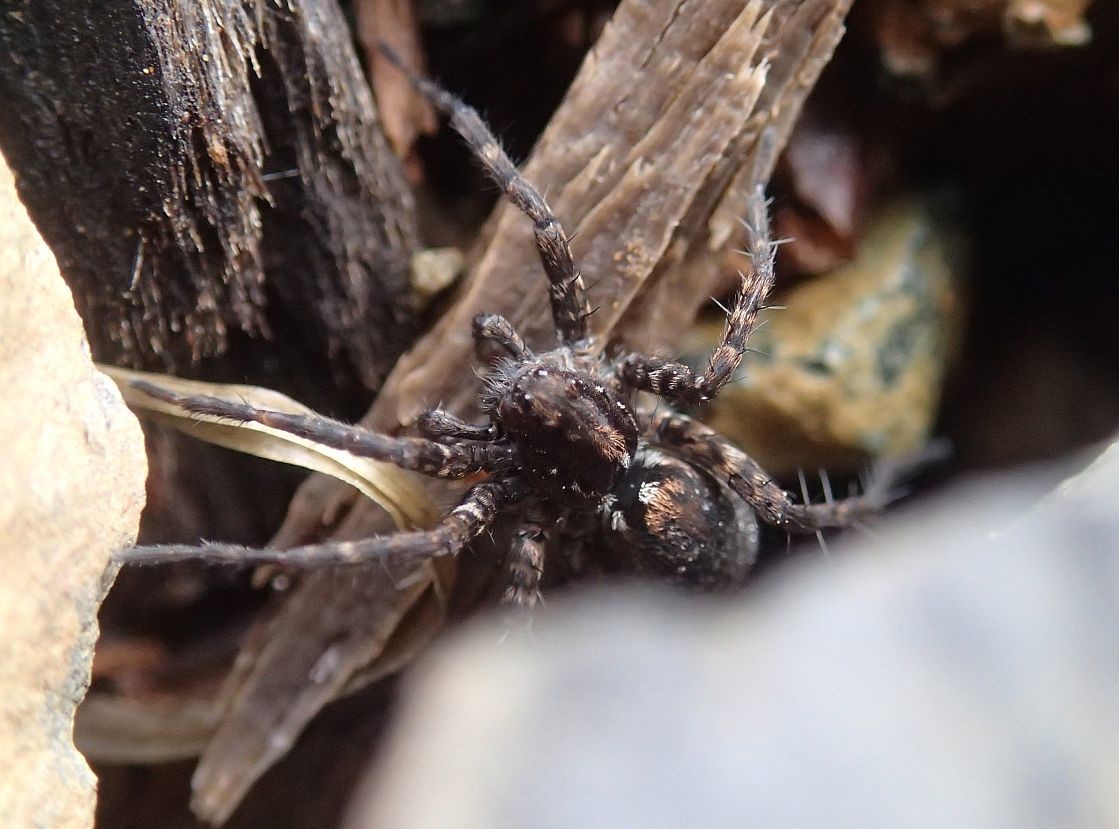
Wolf spider Pardosa sp. (Ara.: Lycosidae) Rosemary Jorna
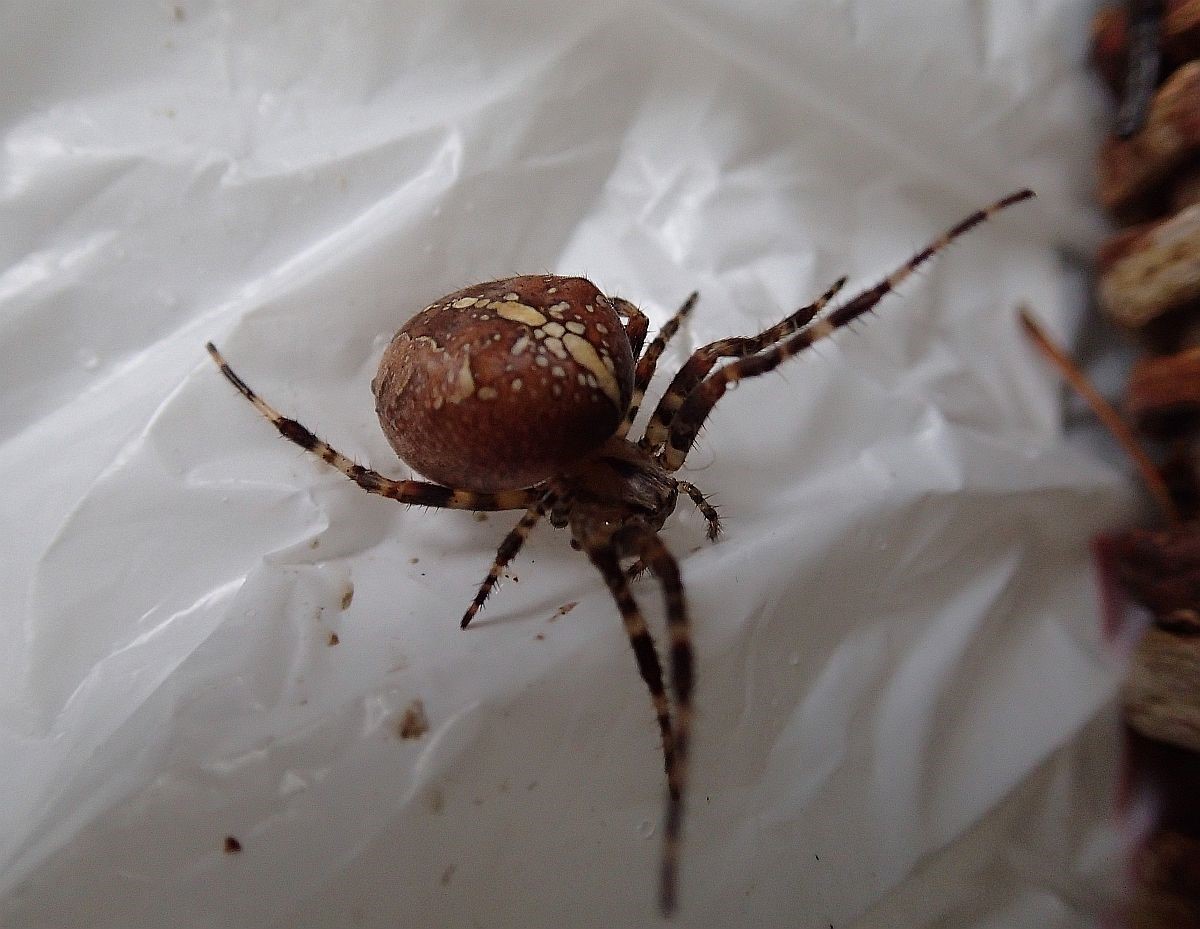
Female Garden Spider Araneus diadematus (Ara.: Araneidae) Rosemary Jorna
Jeremy Tatum sends a picture of a bug from the garden of his Saanich apartment building today. This bug is predaceous, feeding on caterpillars and other soft-bodied invertebrates.
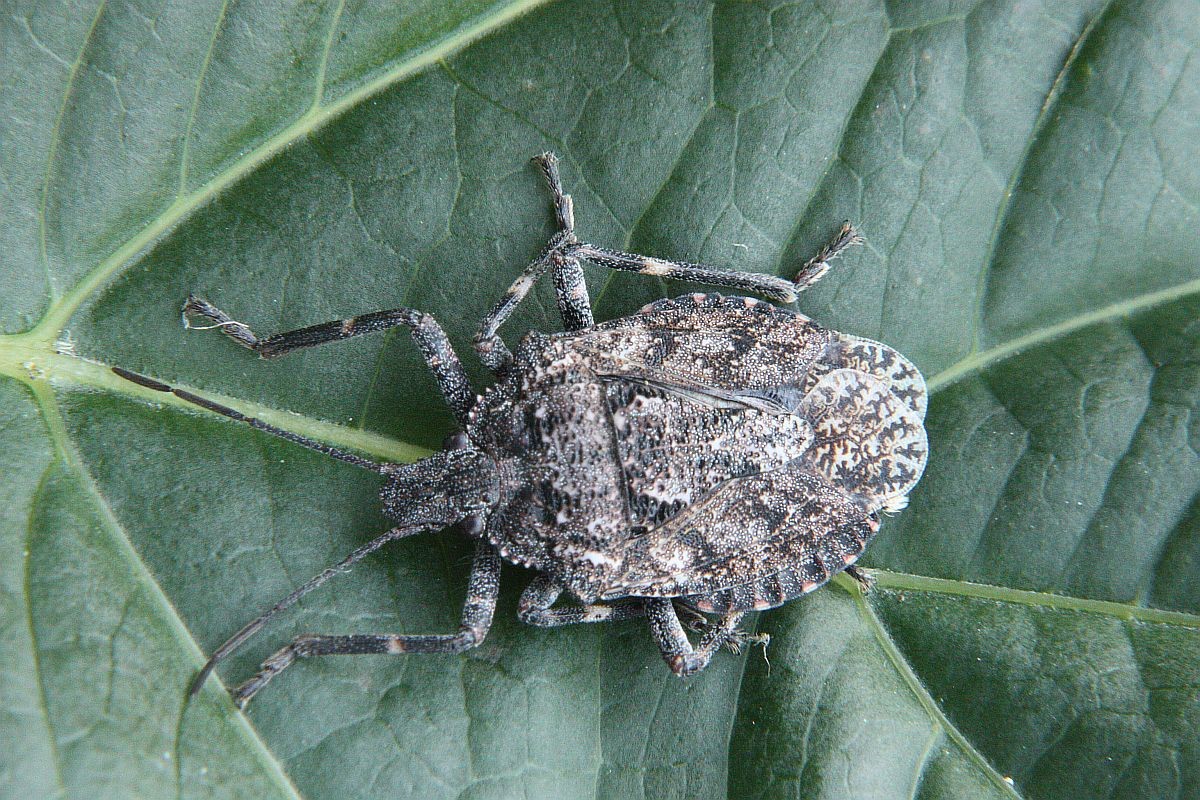
Rough stink bug Brochymena sp. (Hem.: Pentatomidae) Jeremy Tatum
2015 November 7
Jeremy Tatum writes: Here is a White-speck Moth Mythimna unipuncta from my Saanich apartment this morning. I have never seen the caterpillar, but in some parts of North America it can be exceedingly abundant and destructive. Apparently in large numbers it can denude an entire field of low-growing plants at night, and then the caterpillars migrate in a huge army to a neighbouring field. In agricultural circles, the caterpillar is known as the Armyworm.
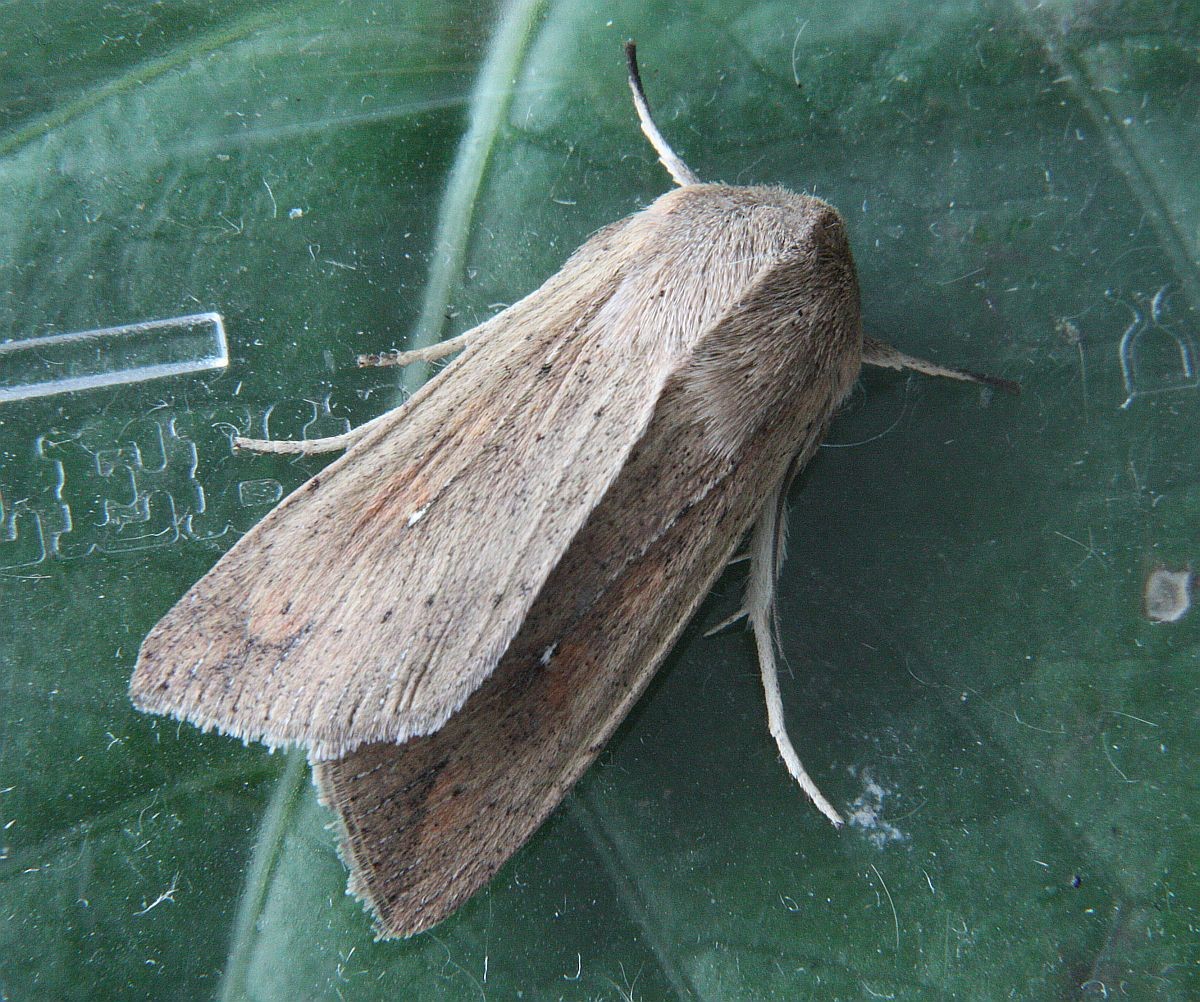
Mythimna unipuncta (Lep.: Noctuidae) Jeremy Tatum